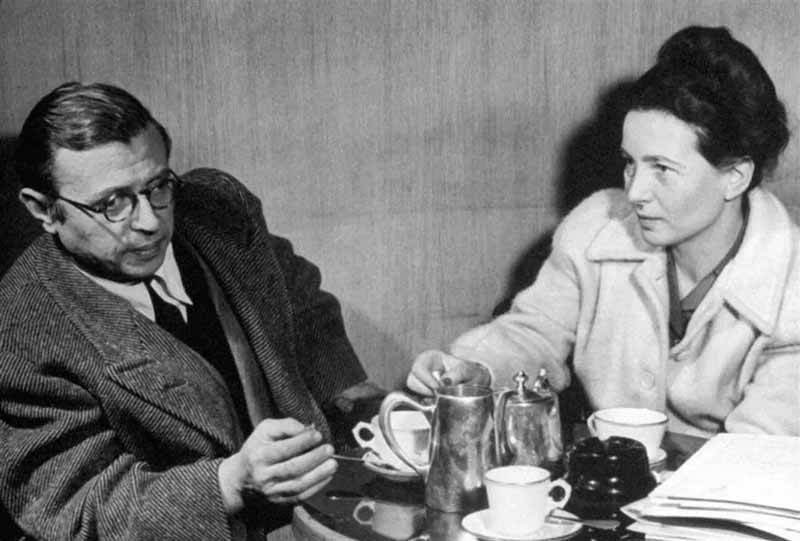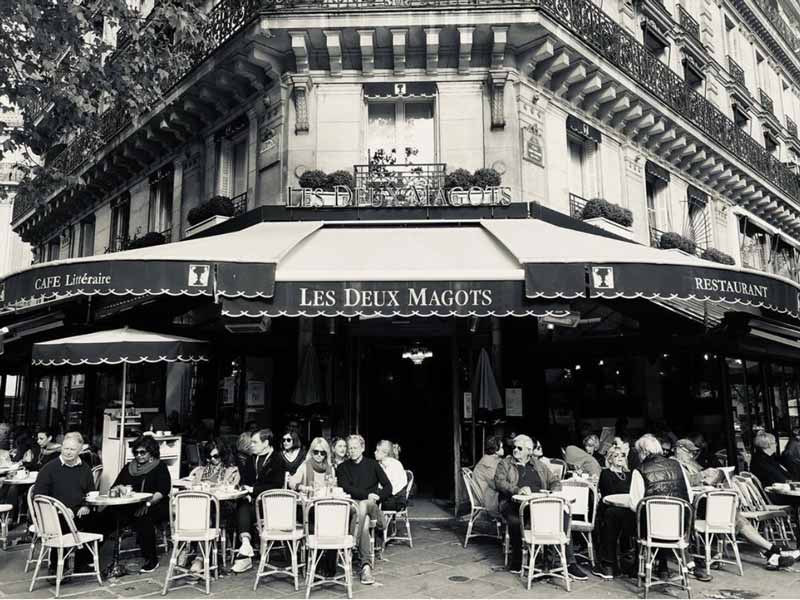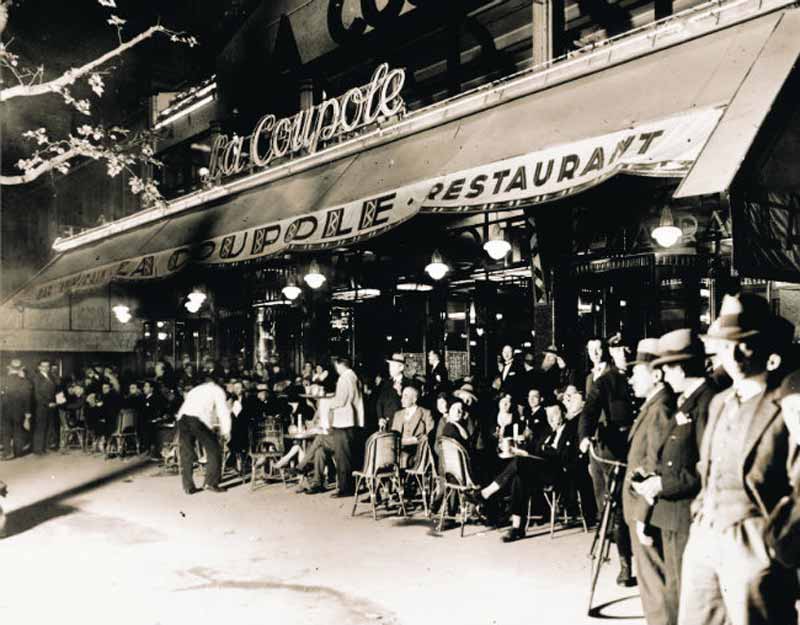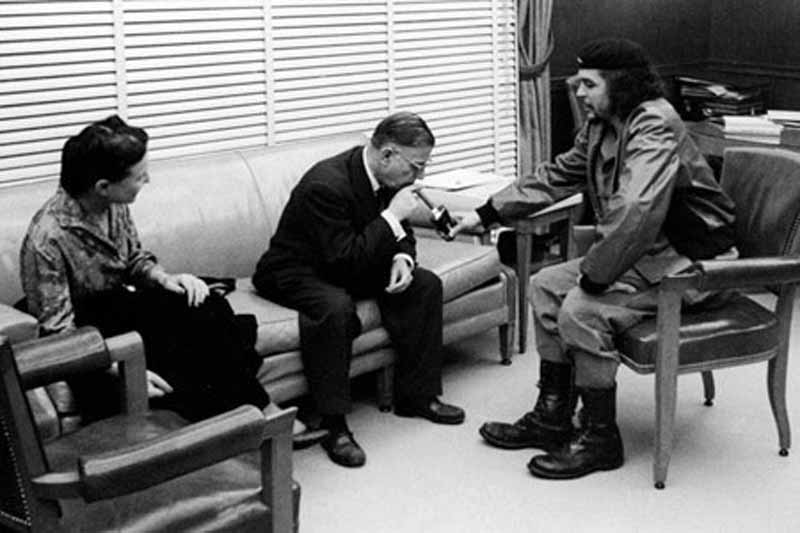Preface 2023
Preface – magazine 2023 A contemporary magazine feeds upon dynamism and vigour. It instantly perceives the inputs deriving from the readers and evolves, offering its best at...
Preface – magazine 2023 A contemporary magazine feeds upon dynamism and vigour. It instantly perceives the inputs deriving from the readers and evolves, offering its best at...
We have to decide to live. On October 28, 1945, Paris encounters his beloved and discussed maitre à penser, who would inflame the intellectual discussions between the post-war...
In Paris, in some cases of the Louvre Museum, we can admire an extraordinary treasure, a rich and refined table service made up of 109 pieces in worked and embossed silver, an...
In the “Regimen Sanitatis” of the Codex Atlanticus (F 213v), Leonardo da Vinci registers the hygienic precepts and advice for healthy living, followed by the rules of...
The twentieth-century wars witnessed a series of crucial revolutions in the field of food organization, both military and civil, which, at the same time, much involved the...
Discovering the educational and training activities of the Edmund Mach Foundation in San Michele all’Adige (TN) Excellence in the agricultural, food and environmental sectors. The...
Florence University of Arts – The American University of Florence FUA – AUF Architect, writer, entrepreneur and the art of cooking Florence – Walking in Via...
Every morning, on time, a few moments before dawn, which, in that region, smelled of thousands of woods, Sumio, who everyone in the village knew as “the Japanese”,...
In recent months, South Korea has risen against Beijing’s want to associate the pao cai speciality with its most representative and identifying gastronomic recipe based on...
The plague described by Manzoni arrived in Milan in the autumn of 1629, spreading gradually in 1630. In May of the same year, everything fell apart, so much so that people...
An interview with Alberto Tintori of OSCAR TINTORI VIVAI By Fiamma Domestici I have always nourished an unconditional passion for the noble citrus fruits of the Tuscan tradition,...
On October 28, 1945, Paris encounters his beloved and discussed maitre à penser, who would inflame the intellectual discussions between the post-war period and the 1968 protest.
It all begins with the lecture that the philosopher Jean-Paul Sartre gives at the Maintenant club, between the Grand Palais and the Seine, on Existentialism and Humanism. The public, even paying a ticket, is so numerous that hardly anyone can see the speaker. Below average stature, Sartre looms large, offering a Parisian bewildered intelligentsia the compass that will guide the most desperate period of contemporary history when the sinister light of Hiroshima still blinds the eyes of the world.
“If we want to survive, we have to decide to live”, said the founder of existentialism on this occasion.

Life in fullness and excess was precisely the style of this celebrity, symbiotically spent inside the city, which, in the collective imagination, has always represented the vanguard of epochal changes. After all, as writer André Malraux will say about Montparnasse and the entire beating heart of Paris, “Everything that has happened, happens or will happen to mankind, is visible here to the naked eye.”
To get to know JP Sartre better, you need to experience the daily atmosphere of the cafes with him. In one of the most popular of the time, Deux Magots, dominated by the two Chinese statues of the old bazaar, the philosopher had written Being and Nothingness. During the Nazi occupation, he met the writer Albert Camus and befriended him. The two intellectuals could not have been more different: Jean-Paul, the French-upper-class son, thick glasses, grouper lips, certainly not an Adonis; Franco-Algerian the latter, pied noir born poor, features a la Bogart. While they ate a petit dejeuner, still called Sartre on the menu of the Deux Magots, history and the world rolled all around. Between a black coffee and an espresso, toasted bread with Charentes-Poitou butter, bi-coloured croissants and homemade jams, they spoke, albeit from different profiles and positions, and made a mutual commitment to “give to the post-war times its ideology”.

The daily life perimeter of Sartre is not very broad. His tiny kingdom as a man and lover, writer and philosopher, has the profile of the Ville Lumière, or rather, of the most barycentric part of it. Thomas Wolfe masterfully described the complexity of this man in his biography. “A mixture of expensive essences, of wine, brandy and beer; of the nostalgic smell of French tobacco, of roasted chestnuts and mysterious spirits, of hundreds of intoxicating colours and the elegant appearance of perfumed women”.
It is the beating heart of Paris, gathered around cafes, bistrots, brasseries, and jazz clubs, already famous or less known at the time. Around Saint Germain de Pres, we find the Cafè de Flore, the Deux Magots, the Lipp brasserie, the Tabou club. At Montparnasse, on the other hand, the brasserie La Coupole and the Bec-de-Gaz café.
For Sartre and his friends, stopping in cafes was not a real treat at the beginning. Especially in the pre-war period, it was about survival. During winter, writing could become painful in the hotel cold rooms, which were not exactly luxurious. In the cafes, people could immerse themselves completely and discreetly. It was customary at the time, so much so that Simone de Beauvoir, renowned partner of Sartre, will say, “There is no better way to understand the society in which one lives than to observe people who do not know they are under scrutiny”. However, the stimulus of cultural curiosity is certainly not lacking. A famous waiter at the Deux Magots, mentioned by Sartre in his writings, is an example that outlines specific human psychology, that of one who, to be always attentive to the customer, lives in the perpetual representation of himself.
The tables of the more famous Parisian cafés and bistrots, as we shall see, will also be a stimulating political laboratory, places of epic discussions between the many souls of the French Left in the face of the great crossroads of the 20th century.
Cafes will be the fil rouge of the long and contrasted love between Jean-Paul and Simone. It was inside one of these cafes, Bec-de-Gaz, in 1929, that the two met for the first time when they were still teaching far from Paris: he in Le Havre, she in Rouen. Knocked out by a long dissertation by their friend Aron on German phenomenology, they found relief sipping an apricot cocktail. Among a mix of gin, apricot brandy, orange and lemon juice, a final touch of cherry and flamed orange peel, the famous liason began and continued in other Parisian cafes, including the Flore.
Simone de Beauvoir writes, “It may seem bizarre, but we felt at home at the Flore”. For a long time, the clock of this cafe marked the whole day: intense morning work (often on the first floor, to avoid distractions), lunch break here or in nearby brasseries, afternoon public relations meetings. After dinner, friends received them in prearranged appointments, even for evening parties.
Sartre goes further and attributes a real philosophical value to his relationship with this cafe. “The roads to the Flore, to me, for many years, were the roads to freedom”. It is no coincidence that close to this think tank were the headquarters of the famous publishing house, specialized in philosophical texts, Gallimard.
The spirit and the body accompanied each other. The day started with pain aux raisins (brioche pastry with raisins, sometimes stuffed with custard). Or Beurre d’Echiré (with a delicate nutty flavour and still served today at the Elysée) accompanied with jams, an excellent starter. Other breaks of the day could be lunchtime with the celebrated wild mushroom omelette, the steak tartare, the salted pork with lentils, or a mid-afternoon snack with a Coupe Flore (ice cream with vanilla, pistachios, raspberry sorbet, red fruit and Chantilly cream).
Jean-Paul and Simone will leave traces of their presence in various Parisian brasseries. Among the most popular, Lipp, 151, Boulevard St. Germain, which the owners described as the immutable house. Here, in addition to its own produced beer, among mirrors, majolica and frescoes, they ate house specialities such as cervelas rémoulade or cassoulet, which you can still eat today.
Within the same neighbourhood, their visits to La Palette were not uncommon. Here, perhaps, they had a quick and delicious Croque Monsieur or Madame with the special Poilane bread, also called country bread, round and enormous, made with a specific combination of white flour, whole wheat and rye.

If we go to Montparnasse, a stop at La Coupole is mandatory, especially for the Sunday lunch. In this realm of art deco, the two lovers had to choose between sea and land. Sometimes they let themselves be tempted with pleasure by the main specialities: the Fishmonger dish or La Coupole (oysters of all types and sizes). Nevertheless, Sartre, who was not fond of shellfish, often opted for the exotic and always loved lamb curry. A curiosity: since 1970, following the Pompidou privacy law, the table next to their usual one would always be left empty.
At the funeral of JP and Simone, held respectively in 1980 and 1986, as the coffins passed, the head waiters and waiters will all be standing outside, with white napkins folded under their left arm.
Furthermore, in this district, the couple will stop several times at La Closerie des Lilas. It opened in 1847 and became a haunt of famous artists and writers. The Puntoun farm duck breast, with vanilla sauce and a side dish of peas and apricots, was very popular. As for the dessert, not to be missed is the exotic vanilla millefeuille from La Réunion, an island in the Indian Ocean.
The culinary passion of the two lovers did not just have the Ville Lumiere as its setting.
When their love was still clandestine, JP took advantage of Simone summer sojourn in Le Grillière at her family home to visit her. He was staying at La Boule d’Or and not having much money yet, Simone herself often revived him, so to say. She stole food from home and organized delicious picnics for him, with baskets full of cheese, gingerbread, meat cold, various stuffed sandwiches and cider.
Following various notations by Simone, it is also possible to reconstruct a small culinary guide of France, which becomes a privileged way to discover the secrets of the province. She mentions the foie gras of every possible area several times, accompanied by Beaujolais wine. Then she speaks of Verdun quiche, as consistent as a cake and light as a soufflé, and the quenelle eaten in Dijon and never really appreciated (large gnocchi made with cream of fish, chicken or meat and sometimes mixed with breadcrumbs and egg).
Simone de Beauvoir concentrates all her joie de vivre in food, as these words well say, “When I sit at the table at the end of the morning or afternoon, hungry for earthly nourishment, my heart is in celebration”.
For Simone, food is where human culture meet, as her travel notes reveal about her lunch with Jorge Amado. He fills her glass with cashew juice, the exotic progenitor of cashews, and the plate of feijoada (a stew of beans and different types of meat, accompanied by rice, farofa, black cabbage, orange slices and various spices), which she defines as dark and fragrant. The Brazilian writer convinced that to understand a country you must first know what you can eat there takes the two French couple to eat in churrascarias, places where you can taste the rodizio meat, a typical grilled local meat. Nowhere in the world, Simone confesses, have I eaten such tasty food.
However, the two show an exceptional fondness for Italian cuisine, where the pleasure of food is complete. The delight of summer and the wandering outdoors leads them to live in unison climate, environment and food. To frame some snapshots of this secular pilgrimage along the peninsula, we would like to remember: the carbonara in the Roman taverns; lasagna from the Forio hotel in Ischia. Moreover, ice creams and sorbets of all kinds and possible flavours; the unavoidable coffees in every place well prepared and strong.
They reconciled worldliness with politics, too. The ideological rift between two friends was consumed at the tables of the Deux Magots, drinking café créme and around thick spirals of the Gauloises Brunes. In the years when Juliette Greco sang the songs by Aragon and Prevert in the other corner, between Sartre and Camus, as Le Monde reported, there were several quarrels. With his “peaceful socialism” expressed in The Rebel (1951), the latter always condemned the revolutionary struggle that achieves justice by destroying freedom. Sartre, on the other side, was still firm in the palingenesian goodness of revolutionary communism.
Yet, the French philosopher memory of “the honeymoon of the revolution” is more pleasant. In February 1960, JP and Simone spent one month in Cuba. They were guests of Fidel Castro and Che Guevara, just one year after the victory of the barbudos. In the photos by the Cuban Korda, the contrast between the statuesque body of Guevara, as he lights a cigar for the guest, and Sartre, who appears even tinier and weaker than usual, is even more impressive. The Lider Maximo leader met them several times, even at dinner. It seems that once, given his well-known gastronomic passion, he took the place of the cook. In this case, most likely, by preparing one of his favourite recipes: shrimp skewers, grilled for precisely six minutes, seasoned just with butter, garlic and lemon dressing. As he often said: “Tasty food is always simple. International cooks waste their time”.

Only nights closed the endless and intense days of JP and Simone. We can represent them in this diptych of words. Sartre writes, “I would rather do nothing than do everything calmly”. De Beauvoir relaunches, “In music and laughter we find the exaltation of the moment and the encounter with others”.
For this reason, with the entire circle of friends, they moved to the places of the Parisian nightlife where, to quote the French philosopher again, the pleasure of wine and parties met. As for the Club du Tabou, 33, Rue Dauphine, a place for artists and intellectuals since the end of the 1940s. The chronicles spoke of London smoke mists and confusion so intense that, by reaction, they could not see one other. Defined as a “place of organized madness”, it hosted rising figures from the world of French song and jazz between the old swing era and the modern frontiers of bebop. In this venue, thanks to JP Sartre, love spread between Miles Davis, 23, the acclaimed trumpeter in jazz history, and Juliette Greco, 22, singer-actress and French post-war muse. Moreover, the founder of existentialism chose exactly Juliette and defined her as the inspiring voice of his cultural current.
One morning, after the very first performances in jazz clubs, he invited her to his house, handing over some books of poetry and asking her to choose one of her own to put it into music. She picked Si tu t’imagines by Raymond Queneau: “If you imagine/ little sweetie little sweetie / if you imagine / this will this will this / will last forever / this season of / this season of/ season of love / you are fooling yourself / little sweetie little sweetie”.
It is a song about love, not consolation. It is the atmosphere of this long cultural season, in which the euphoria cannot shake off the melancholy of living.
FRANCO BANCHI